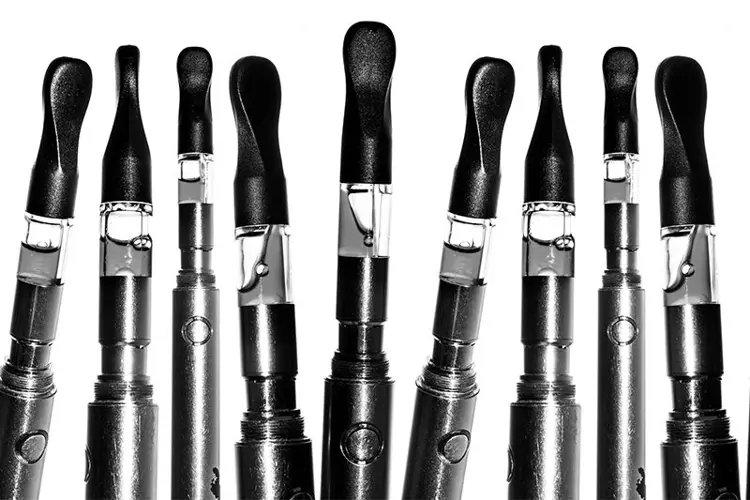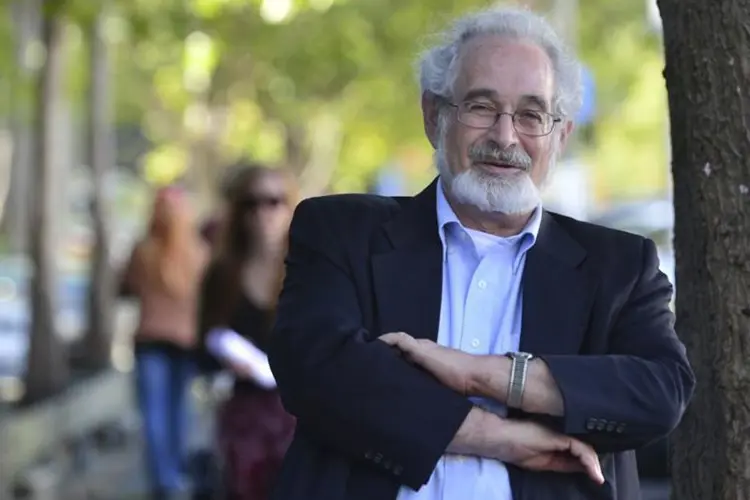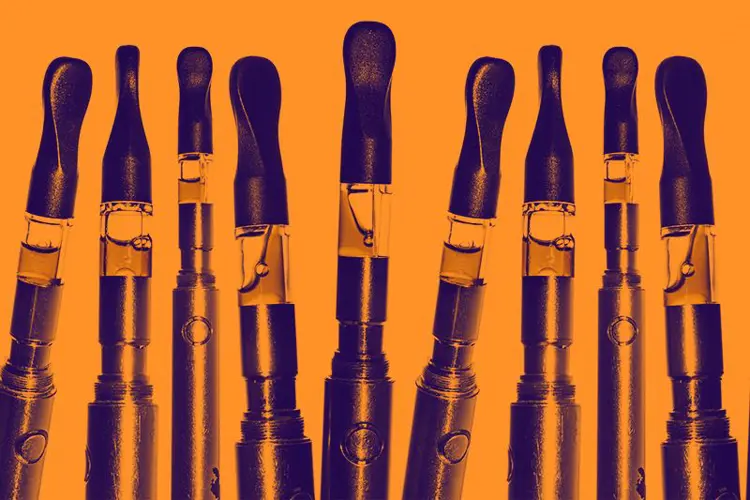A group of tobacco researchers has asked the Centers for Disease Control and Prevention (CDC) and the U.S. Surgeon General to correct misinformation about nicotine vaping shared by those public health agencies.
The authors laud Surgeon General Vivek Murthy’s recent COVID-inspired initiative to reduce health misinformation, but remind the SG and the CDC that the agencies are also actively promoting misinformation regarding e-cigarettes. Specifically, the authors cite CDC misinformation regarding the 2019 outbreak of lung injuries called “EVALI,” and the Surgeon General’s 2016 youth vaping report that claims nicotine vaping is a gateway to youth smoking.
The appeal is in an editorial published today in the journal Addiction. It was co-authored by Georgia State University health economist Michael Pesko and colleagues from Harvard Medical School, Penn State University, the Medical University of South Carolina, and the University of Michigan. Iowa Attorney General and former Truth Initiative board chairman Tom Miller is also a co-author.
CDC won’t give up the deceptive “EVALI” name
The authors explain in the editorial that the CDC’s adoption of the name “EVALI” (“e-cigarette or vaping product use-associated lung injury”) for the 2019 lung injuries, and its refusal to amend the name, has led to widespread and continuing misinformation—in the popular press and in scientific circles—about the cause of the condition.
During the outbreak, the CDC was the last public health agency to recognize that vitamin E acetate (mixed with cannabis oil by black market sellers in order to save money) was the primary—if not only—cause of the injuries. And the agency never fully ruled out that nicotine vaping could be at least partly responsible. (It is believed that current FDA Center for Tobacco Products Director Brian King coined the name “EVALI.” King, a staunch opponent of nicotine vaping then and now, was at the time an employee of the CDC Office on Smoking and Health.)
Health misinformation is a real problem, and not just on the fringes of the internet. Study design incapable of producing causal effects often leads to health misinformation, which government should be reluctant to promote and quick to fix when stronger evidence emerges.
— Michael F. Pesko 🇺🇦 (@mikepesko) December 12, 2022
The name helped kill 68 people and hospitalize thousands of others who were not clearly told the risks of vaping unregulated THC oil cartridges by the country’s leading public health agency. Many THC vapers continued to use dangerous products because the CDC was deliberately vague concerning nicotine vaping as a possible cause, and refused to name vitamin E acetate as the primary cause. And many nicotine vapers returned to smoking cigarettes.
“While the CDC’s name includes ‘e-cigarette’,” the authors write, “all evidence points towards Vitamin E acetate-contaminated illegal tetrahydrocannabinol (THC) vapes as the cause, and no research has identified any chemicals found in nicotine e-cigarettes as the cause. Vitamin E acetate is not soluble in nicotine e-liquids and has never been detected in nicotine e-liquids.
“Despite the evidence, the CDC continues including ‘e-cigarettes’ in the name EVALI. This naming has affected news coverage and contributed to distorted consumer beliefs about the risks of nicotine vaping.”
The same authors formally requested in 2021 that the CDC retroactively change the name “EVALI,” removing “e-cigarette” from the name and adding “adulterated THC.” That petition, signed by an additional 68 experts, was rejected by the CDC.
The gateway to smoking that never was
When it was published, the Surgeon General’s 2016 report titled “E-Cigarette Use Among Youth and Young Adults” got attention in virtually every newspaper and on every TV news program in the country. But as we noted at the time, few people would bother with the full 298-page report when the SG’s website offered a ready shortcut.
The Surgeon General’s website still functions as a resource for information on vaping and young people, and continues to mislead the public, implying that vaping is a known gateway to smoking for adolescents. But that was never true.
The Addiction editorial explains that “significant evidence now exists that this association between vaping and smoking is not causal, which is a source of confusion for the lay public and health-care professionals.” The lack of causation is underlined by real-life data collected since the SG report’s publication. Even as youth vaping hit its peak in 2019, youth smoking was sinking rapidly, and that decline has continued.
(2/2) According to @cdoug: "Misinformation from the Surgeon General’s website implying #ecig use causes young people to become smokers is not consistent with the evidence. While youth #ecig use peaked in 2019, youth smoking recently dropped to historically low levels below 2%."
— University of Michigan Tobacco Research Network (@UMTobResNetwork) December 12, 2022
The editorial’s authors also describe how “natural experiments” that evaluate “how e-cigarette restrictions adopted by some localities but not others at a given point in time have impacted youth cigarette smoking” show that e-cigarette use reduces youth smoking overall. The natural experiments include Pesko’s own tax studies that show cigarettes and vaping products are economic substitutes.
The 2016 SG report didn’t consider existing natural experiment studies that could have steered its authors away from gateway claims. And the SG website continues even today to ignore that evidence and claim that “there is no evidence to support the claim […] that use of e-cigarettes by young people might ‘protect’ them from using cigarettes.”
“Misinformation from the Surgeon General’s website that implies e-cigarette use causes young people to become smokers is not consistent with the evidence,” co-author Cliff Douglas said in a press release. “While youth e-cigarette use peaked in 2019, youth smoking recently dropped to historically low levels, below two percent.”
“Association does not mean causation,” write Pesko and colleagues in the Addiction editorial. “Public health officials, in particular the SG and the CDC, must do a better job of explaining this difference to the public, as public health recommendations should be based on solid causal data and communicated clearly and appropriately to the lay public.”
Will anyone pay attention?
The authors note that the cited misinformation continues to be spread by the news media, public health and doctors’ organizations, and is used to advocate “for aggressive e-cigarette regulation that many studies have shown leads to increases in combustible tobacco product use.” Correcting the misinformation is “a public health priority,” they write.
It should be a priority—and the editorial should be a news story in itself. But whether it will get any attention from health and science reporters is questionable. Last year, reporters completely ignored a more comprehensive paper challenging vaping misinformation, written by 15 former presidents of the Society for Research on Nicotine and Tobacco.
Reporters and editors at major news outlets seem content to avoid questioning vaping mis- and disinformation, and in fact they play an important role spreading it. They generally support anti-vaping orthodoxy by parroting the dominant vaping myths and giving oxygen to weak or cherry-picked supporting evidence. Until reporters begin to fully understand the harms caused by their passivity, laziness, and trust in dogmatic anti-vaping advocates, public opinion on vaping and other safer nicotine products simply cannot change.
The Freemax REXA PRO and REXA SMART are highly advanced pod vapes, offering seemingly endless features, beautiful touchscreens, and new DUOMAX pods.
The OXVA XLIM Pro 2 DNA is powered by a custom-made Evolv DNA chipset, offering a Replay function and dry hit protection. Read our review to find out more.
The SKE Bar is a 2 mL replaceable pod vape with a 500 mAh battery, a 1.2-ohm mesh coil, and 35 flavors to choose from in 2% nicotine.
Because of declining cigarette sales, state governments in the U.S. and countries around the world are looking to vapor products as a new source of tax revenue.
The legal age to buy e-cigarettes and other vaping products varies around the world. The United States recently changed the legal minimum sales age to 21.
A list of vaping product flavor bans and online sales bans in the United States, and sales and possession bans in other countries.


















